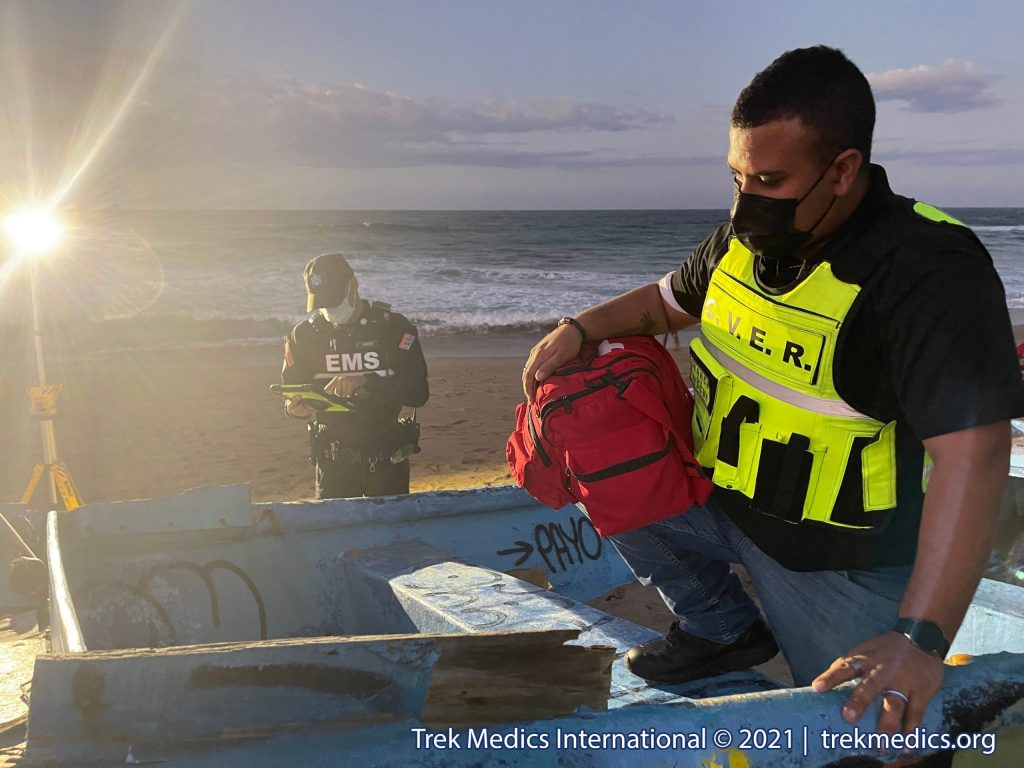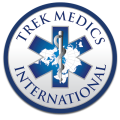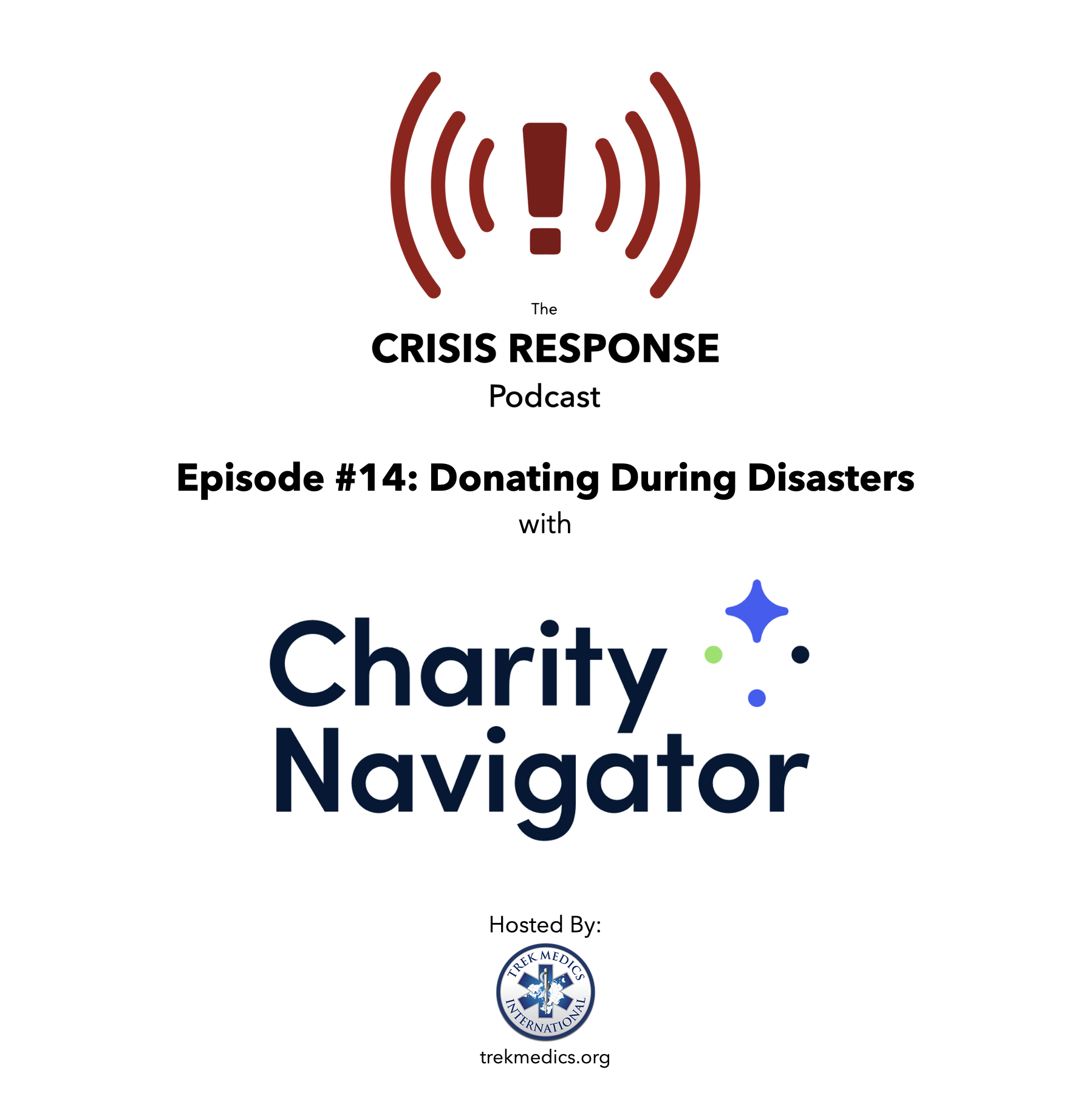Emergency Response Volunteers Medically Assist
Arriving Migrants on Puerto Rico’s Coasts
As troubles in Haiti continue to mount, the allure of escape to more stable and promising futures is hard to resist for many on the Caribbean island, leading them to take great risks by fleeing the island in makeshift rafts and poorly equipped sea craft. Where they’ll end up is largely determined by the seas and wind, but increasingly they are arriving on the island of Puerto Rico — just a few hundred miles to the east in the northern Caribbean. Although there are Federal agencies in Puerto Rico to deal with the migrants, in rural, western Puerto Rico these agencies often rely on the help of volunteer emergency response organizations.
We got the chance to talk with members of two of the organizations who are providing assistance to the Haitian migrants: S.V.E.R.I. (Servicio Voluntario de Emergencias y Rescate de Isabela), located in the municipality of Isabela, on the northwestern corner of the island; and C.V.E.R. (Cuerpo Voluntario para Emergencias de Rincón) located in the municipality of Rincón, facing west near the dangerous Mona Passage where many Haitians get caught in their sea-bound escape.
Over the past few years, the arrival of ‘yolas’ — a local term for the makeshift watercraft Haitian migrants use to traverse the seas — has increased to the point that sometimes they receive daily calls for several days on end.

Medical Worries
According to members of S.V.E.R.I. and C.V.E.R., the most common medical problems the migrants are suffering from when they arrive on the Puerto Rican coast include malnutrition, dehydration, contusions, hypothermia, lacerations and infections.
“Most of the lacerations and contusions occur when they’re trying to get to the coast,” said Irwin Carrion, Head of S.V.E.R.I. “Most of the coastline in this area is surrounded with coral reefs which can’t be seen by the boat captains making the vessels collide, throwing people overboard. Others just get injuries because they don’t wait for the boat to make it to shore and just take the risk trying to swim.”
“We have experienced an increase in migrant activity over the past few years but we recently have seen a tendency to deal with more women than men, and, even more impressive, there are a lot of pregnant women making those trips,” said Christian Figueroa, President of C.V.E.R. “Many of them, due to the aforementioned conditions, arrive to shore with pregnancy complications, also, due to tension, the force of water, blows, among others. We have come across situations where some women give birth while at sea and arrive with a baby in their arms.”
Although C.V.E.R. doesn’t have an ambulance service, they posses a variety of rescue equipment and supplies to aid the migrants. “We limit ourselves to assisting with rehydration, first aid for wounds, and we carry thermal blankets to attend migrants that arrive with hypothermia caused by the cold sea water despite being in the sun. Basically we attend to them with initial stabilization while we wait for the state paramedics arrive on scene”, said Figueroa.
Fortunately, S.V.E.R.I. has their own ambulance, which allows them to carry out more advanced procedures and patient transport if needed. “However,” added Carrion, “there are times when we receive calls for search and rescue, but the call can turn into a body recovery mission.”
Both organizations implement drone imaging technology to assist with Search and Rescue activities which actually comes very handy and time saving when locating a person or when working overnight. They also use Trek Medics‘ Beacon emergency dispatch platform to organize and coordinate response efforts as they do any other medical emergency in their jurisdiction.

Using Beacon
“The Beacon platform saves us a lot of time. Being able to indicate to everyone at the same time in a matter of two or three seconds that there is a situation, where exactly it is and what is happening; this saves a lot of time, and it’s time that saves lives”, said Figueroa. “Many times within a matter of minutes a person can be injured and even lose their life. For us it is very important that Beacon helps us to send the information to everyone instantly.”
“For any type of situation, Beacon has always made it easy for us to notify the volunteer,” Carrion said. “For us it is much easier for the volunteer to receive an incident alert notification on their phone or on any device they have under the platform. That person can respond through the app and ask for additional information if necessary.”
About specific advantages of using Beacon, Carrion added, “the ability to have the information at your fingertips and to be able to accept or deny the incident alert in order to know who you have working on the incident or, if needed, to request additional resources to other agencies. It becomes very helpful when dispatching our volunteers.”
“In our case it is the same,” Figueroa agreed. “Being able to have control of the platform in your hands and even more to have a record of everything that is happening from the moment the first alert is sent until the incident closes. Being able to document everything and that it is stored in an area where whatever happens, whatever it is, you have the assurance that it will be available.”
Following Migration On the Caribbean

While the use of Beacon in Puerto Rico by S.V.E.R.I. and C.V.E.R. to assist Haitians is a new aspect of their routine emergency response operations, Trek Medics has been following how Haitians are being effected by natural and man-made disasters through Beacon for some time.
With similar community-based response organizations using the Beacon platform near the Haitian capital and in the earthquake-affected southwest of the country, as well as on the Haitian-Dominican Border and along the northern coast of the Dominican Republic, Trek Medics has been piecing together the contours of how continued unrest in the country is causing Haitians to flee in increasing numbers, while encountering more troubles as they earnestly seek a safer and more promising future in other parts of the Caribbean.








